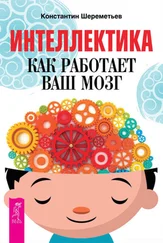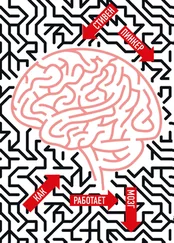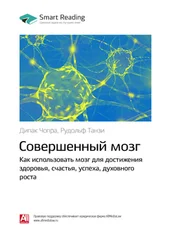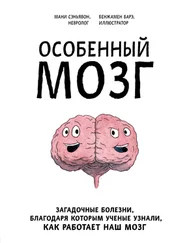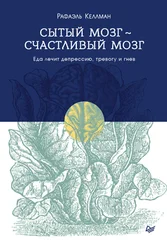Martin, L.J., et al., Social deprivation of infant rhesus monkeys alters the chemoarchitecture of the brain: I. Subcortical regions. Journal of Neuroscience, 1991. 11 (11): p. 3344–3358.
Metzner, J.L. and J. Fellner, Solitary confinement and mental illness in US prisons: A challenge for medical ethics. 2010.
Izuma, K., D. N. Saito, and N. Sadato, Processing of the incentive for social approval in the ventral striatum during charitable donation. Journal of cognitive neuroscience, 2010. 22 (4): p. 621–631.
Buchanan, K.E. and A. Bardi, Acts of Kindness and Acts of Novelty Affect Life Satisfaction. The Journal of Social Psychology, 2010. 150 (3): p. 235–237.
Bateson, M., D. Nettle, and G. Roberts, Cues of being watched enhance cooperation in a real-world setting. Biology Letters, 2006. 2 (3): p. 412–414.
Rigdon, M., et al., Minimal social cues in the dictator game. Journal of Economic Psychology, 2009. 30 (3): p. 358–367.
Weir, K., The pain of social rejection. American Psychological Association, 2012. 43.
Woo, C.W., et al., Separate neural representations for physical pain and social rejection. Nat Commun, 2014. 5: p. 5380.
Wesselmann, E.D., et al., Adding injury to insult: Unexpected rejection leads to more aggressive responses. Aggressive Behavior, 2010. 36 (4): p. 232–237.
Farrow, T., et al., Neural correlates of self-deception and impression-management. Vol. 67. 2014.
Morrison, S., J. Decety, and P. Molenberghs, The neuroscience of group membership. Neuropsychologia, 2012. 50 (8): p. 2114–20.
D’Argembeau, A., On the Role of the Ventromedial Prefrontal Cortex in Self-Processing: The Valuation Hypothesis. Frontiers in Human Neuroscience, 2013. 7: p. 372.
Fischer, P., et al., The bystander-effect: a meta-analytic review on bystander intervention in dangerous and non-dangerous emergencies. Psychological bulletin, 2011. 137 (4): p. 517.
Gonçalves, B., N. Perra, and A. Vespignani, Modeling users’ activity on twitter networks: Validation of dunbar’s number. PloS one, 2011. 6 (8): p. e22656.
Clark, C., Brain Sex in Men and Women – From Arousal to Orgasm | Brain Blogger, in BrainBlogger. 2014.
Laeng, B., O. Vermeer, and U. Sulutvedt, Is beauty in the face of the beholder? PloS one, 2013. 8 (7): p. e68395.
Järvi, T., et al., Evolution of variation in male secondary sexual characteristics. Behavioral Ecology and Sociobiology, 1987. 20 (3): p. 161–169.
Georgiadis, J.R. and M. L. Kringelbach, Intimacy and the Brain: Lessons from Genital and Sexual Touch, in Affective Touch and the Neurophysiology of CT Afferents. 2016, Springer: p. 301–321.
Cazala, F., N. Vienney, and S. Stoléru, The cortical sensory representation of genitalia in women and men: a systematic review. Socioaffective Neuroscience & Psychology, 2015. 5: p. 10.3402/snp.v5.26428.
The neuroscience of Erogenous Zones. 2017; Available from: https://www.bangor.ac.uk/psychology/news/the-neuroscience-of-erogenous-zones-15794.
Turnbull, O.H., et al., Reports of intimate touch: Erogenous zones and somatosensory cortical organization. Cortex, 2014. 53: p. 146–154.
Georgiadis, J.R., Doing it … wild? On the role of the cerebral cortex in human sexual activity. Socioaffective Neuroscience & Psychology, 2012. 2: p. 17337.
Aggleton, E.J.P., et al., The amygdala: a functional analysis. 2000.
Baird, A.D., et al., The amygdala and sexual drive: insights from temporal lobe epilepsy surgery. Annals of neurology, 2004. 55 (1): p. 87–96.
Newman, S.W., The medial extended amygdala in male reproductive behavior a node in the mammalian social behavior network. Annals of the New York Academy of Sciences, 1999. 877 (1): p. 242–257.
Goldstein, J.M., Sex, hormones and affective arousal circuitry dysfunction in schizophrenia. Hormones and behavior, 2006. 50 (4): p. 612–622.
Shirtcliff, E.A., R. E. Dahl, and S. D. Pollak, Pubertal development: correspondence between hormonal and physical development. Child development, 2009. 80 (2): p. 327–337.
Alexander, G.M. and B. B. Sherwin, The association between testosterone, sexual arousal, and selective attention for erotic stimuli in men. Horm Behav, 1991. 25 (3): p. 367–81.
van Anders, S.M., Testosterone and sexual desire in healthy women and men. Archives of Sexual Behavior, 2012. 41 (6): p. 1471–1484.
Rajfer, J., Relationship Between Testosterone and Erectile Dysfunction. Reviews in Urology, 2000. 2 (2): p. 122–128.
Sarrel, P.M., Effects of hormone replacement therapy on sexual psychophysiology and behavior in postmenopause. Journal of women’s health & gender-based medicine, 2000. 9 (1, Supplement 1): p. 25–32.
Sarrel, P., B. Dobay, and B. Wiita, Estrogen and estrogen-androgen replacement in postmenopausal women dissatisfied with estrogen-only therapy. Sexual behavior and neuroendocrine responses. The Journal of reproductive medicine, 1998. 43 (10): p. 847–856.
Purves, D., G. Augustine, and D. Fitzpatrick, Autonomic regulation of sexual function. 2001, Sunderland: Sinauer Associates.
Ishai, A., Sex, beauty and the orbitofrontal cortex. International Journal of Psychophysiology, 2007. 63 (2): p. 181–185.
Ortega, V., I. Zubeidat, and J. C. Sierra, Further examination of measurement properties of Spanish version of the Sexual Desire Inventory with undergraduates and adolescent students. Psychological reports, 2006. 99 (1): p. 147–165.
Montgomery, K.A., Sexual Desire Disorders. Psychiatry (Edgmont), 2008. 5 (6): p. 50–55.
Gray, J.A., Brain systems that mediate both emotion and cognition. Cognition & Emotion, 1990. 4 (3): p. 269–288.
Swerdlow, N.R. and G. F. Koob, Dopamine, schizophrenia, mania, and depression: toward a unified hypothesis of cortico-striatopallido-thalamic function. Behavioral and brain sciences, 1987. 10 (2): p. 197–208.
Shenhav, A., M. M. Botvinick, and J. D. Cohen, The expected value of control: an integrative theory of anterior cingulate cortex function. Neuron, 2013. 79 (2): p. 217–240.
Gola, M., M. Miyakoshi, and G. Sescousse, Sex, Impulsivity, and Anxiety: Interplay between Ventral Striatum and Amygdala Reactivity in Sexual Behaviors. The Journal of Neuroscience, 2015. 35 (46): p. 15227.
McCabe, M.P., The role of performance anxiety in the development and maintenance of sexual dysfunction in men and women. International Journal of Stress Management, 2005. 12 (4): p. 379–388.
Читать дальше
Конец ознакомительного отрывка
Купить книгу


